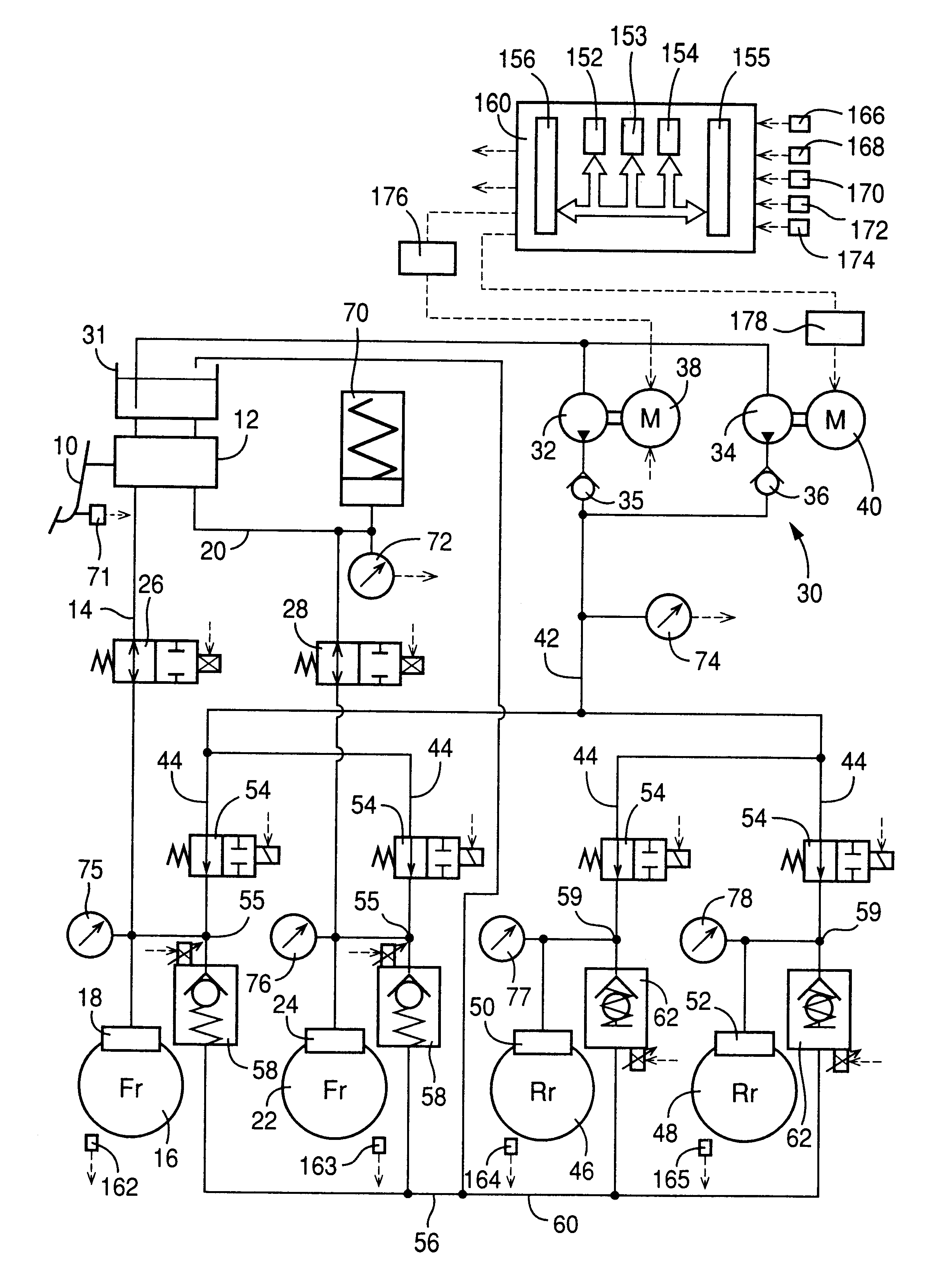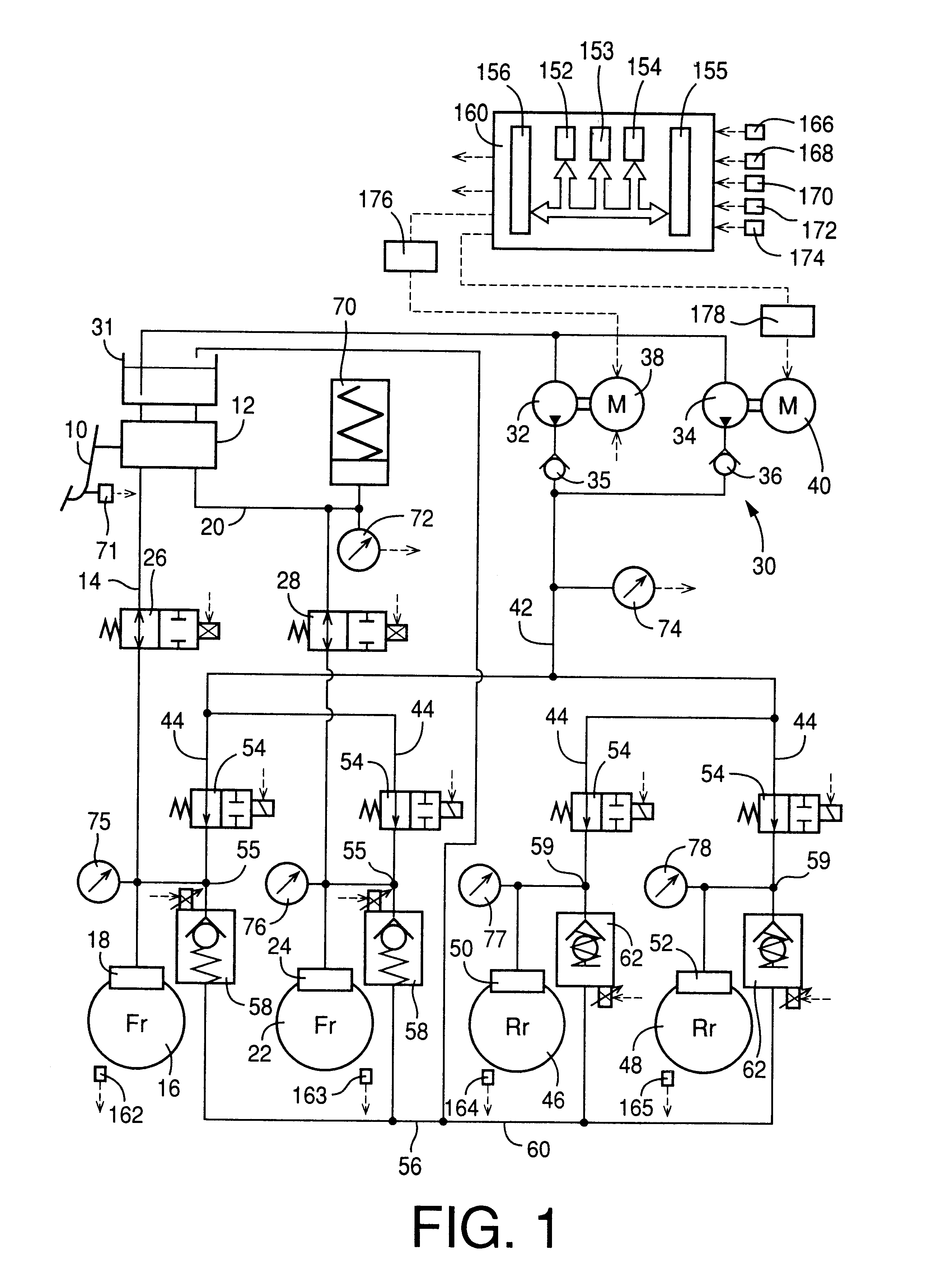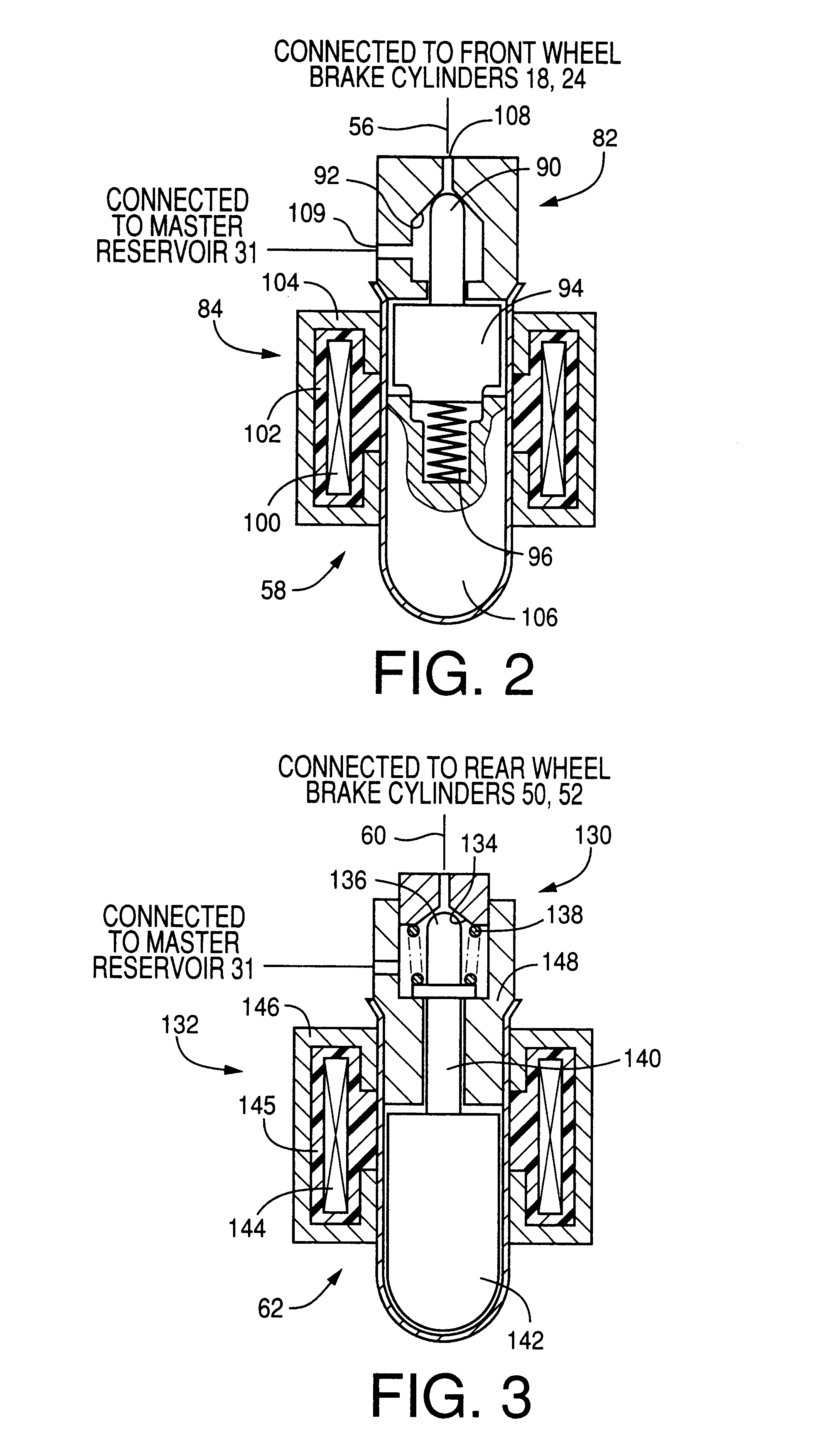Apparatus for increasing brake cylinder pressure by controlling pump motor and reducing the pressure by controlling electric energy applied to control valve
- Summary
- Abstract
- Description
- Claims
- Application Information
AI Technical Summary
Benefits of technology
Problems solved by technology
Method used
Image
Examples
second embodiment
[0218]The stationary vehicle braking control routine of FIG. 15 is formulated to increase the threshold EPS of the pressure difference ΔP used for selecting one of the pressure increase, hold and reduction modes, and to select the pressure hold mode in step S65 when the wheel speed is lower than the predetermined threshold even when the pressure difference ΔP is larger than the increased threshold EPS′. However, steps S65 and S67 may be eliminated so that the pressure increase mode is selected as long as the pressure difference ΔP is larger than the increased threshold EPS′. An increase in the threshold EPS results in increasing the chance of selecting the pressure hold mode. Further, the common pressure control in step S11 of FIG. 4 may be adapted to select the pressure hold mode when the change rate ΔPref of the target wheel brake cylinder pressure Pref is lower than a predetermined lower limit. In this case, a common pressure control routine illustrated in the flow chart of FIG. ...
third embodiment
[0224]While the above two embodiments are adapted to select one of the pressure increase mode, pressure hold mode and pressure reduction mode depending upon the pressure difference ΔP between the target wheel brake cylinder pressure Pref and the actual wheel brake cylinder pressure, the rate of change ΔPref of the target wheel brake cylinder as well as the pressure difference ΔP is taken into account to select one of the pressure increase, hold and reduction modes. An example of this arrangement according to the present invention is shown in FIG. 17.
[0225]In the third embodiment of FIG. 17, the pressure hold mode rather than the pressure increase mode is selected when the change rate ΔPref is not higher than a predetermined threshold EPS even while the pressure difference ΔP is larger than the predetermined threshold EPS. Further, the pressure hold mode rather than the pressure reduction mode is selected when the change rate ΔPref is not lower than the threshold EPS even while the p...
fourth embodiment
[0229]For instance, the control device 160 may be adapted to execute a motor control routine illustrated in the flow chart of FIG. 18 according to this invention. This motor control routine is executed as an interruption routine at a predetermined time interval. The routine is initiated with step S101 to determine whether a MOTOR START flag is set at “1”. If a negative decision (NO) is obtained in step S101, the control flow goes to step S102 to determine whether the low-pressure pump motor 40 has been commanded to be turned on (started). If an affirmative decision (YES) is obtained in step S102, the control f low goes to step S103 to set the MOTOR START flag to “1” and start a timer, and then to step S104 to apply the maximum voltage to the pump motor 40. Step S104 is followed by step S105 to determine whether a predetermined time has elapsed after starting of the timer, namely, after the maximum voltage has been applied to the pump motor 40. If a negative decision (NO) is obtained...
PUM
 Login to View More
Login to View More Abstract
Description
Claims
Application Information
 Login to View More
Login to View More - R&D
- Intellectual Property
- Life Sciences
- Materials
- Tech Scout
- Unparalleled Data Quality
- Higher Quality Content
- 60% Fewer Hallucinations
Browse by: Latest US Patents, China's latest patents, Technical Efficacy Thesaurus, Application Domain, Technology Topic, Popular Technical Reports.
© 2025 PatSnap. All rights reserved.Legal|Privacy policy|Modern Slavery Act Transparency Statement|Sitemap|About US| Contact US: help@patsnap.com



